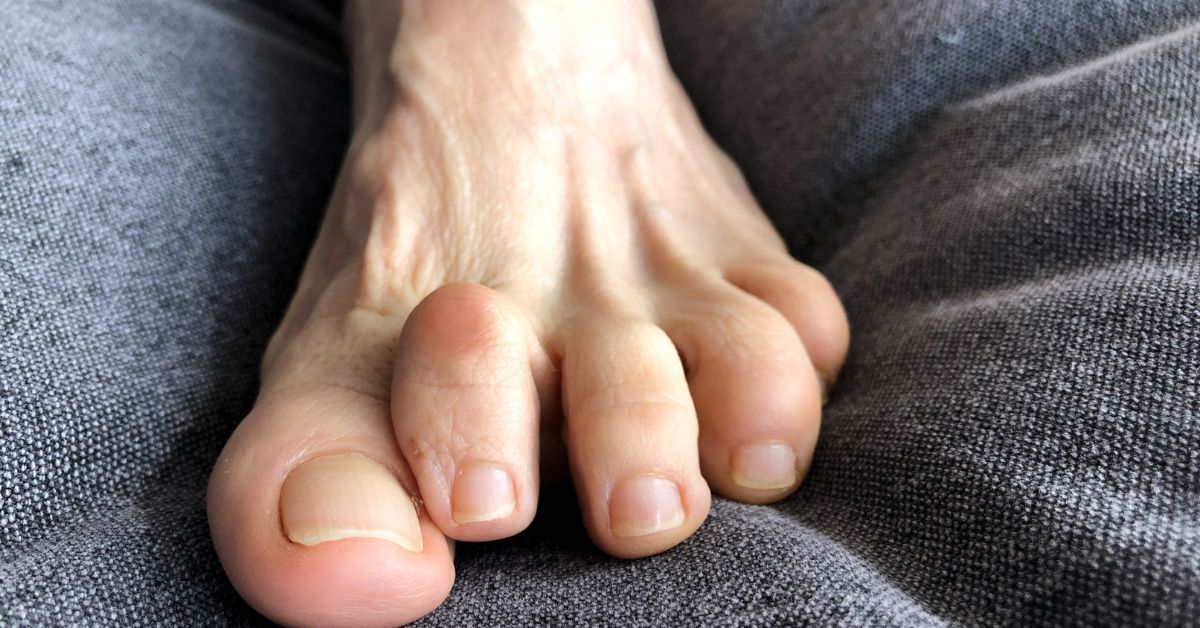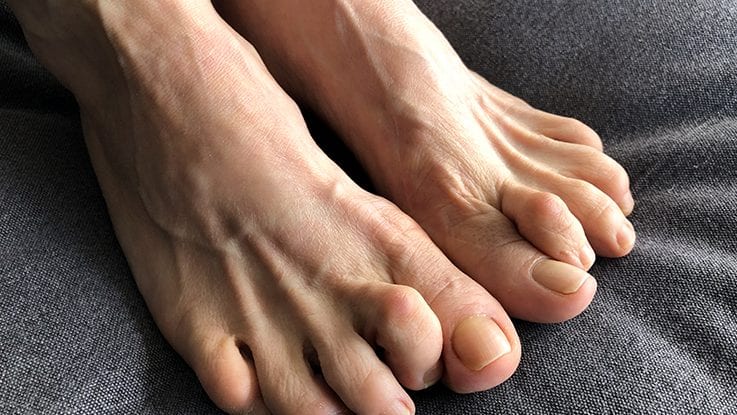Hammer toe, also known as hammertoe, is a common foot deformity that affects one or more of the smaller toes, usually the second, third, or fourth toe. It is characterized by an abnormal bending or curling of the toe at the middle joint, resembling a hammer or claw.
Causes: Hammer toe can be caused by several factors, including:
- Muscle imbalance: Imbalance in the muscles and tendons that control the movement of the toe can cause it to bend unnaturally.
- Improper footwear: Wearing shoes that are too tight or narrow can force the toes into a cramped position, leading to the development of hammer toe.
- Genetics: Some people have a hereditary predisposition to developing foot deformities like hammer toe.
- Trauma: An injury to the toe or foot can result in a hammer toe.
Symptoms: The following symptoms are typically associated with hammer toe:
- Toe deformity: The affected toe is bent or curled at the middle joint, appearing hammer-like.
- Pain or discomfort: Hammer toe can cause pain or discomfort when walking or wearing shoes, especially if there is friction or pressure on the affected area.
- Corns and calluses: Due to the abnormal shape of the toe, corns or calluses may develop on the top or tip of the toe, where it rubs against shoes or other toes.
- Limited flexibility: The toe may have limited movement, making it difficult to straighten or bend.


Treatment: Treatment options for hammer toe depend on the severity of the condition. Non-surgical treatments may include:
- Wearing proper footwear: Choose shoes with a wide toe box and low heels to reduce pressure on the toes. Avoid high heels or tight-fitting shoes.
- Toe exercises: Specific exercises may help improve toe flexibility and strengthen the muscles, helping to alleviate the condition.
- Padding or orthotic devices: Cushioning pads or orthotic inserts can provide support and relieve pressure on the affected toe.
- Corn and callus removal: A healthcare professional can safely remove corns and calluses caused by hammer toe.
If conservative measures fail to provide relief, or if the condition is severe and causing significant pain or difficulty in walking, surgical intervention may be considered. Surgical options vary depending on the specifics of the deformity but generally involve releasing or repositioning tendons, ligaments, or joints to correct the toe’s alignment.
It is important to consult with a healthcare professional, such as a podiatrist or orthopedic specialist, for an accurate diagnosis and appropriate treatment plan for hammer toe. They can evaluate your specific condition and provide personalized recommendations based on your needs.

